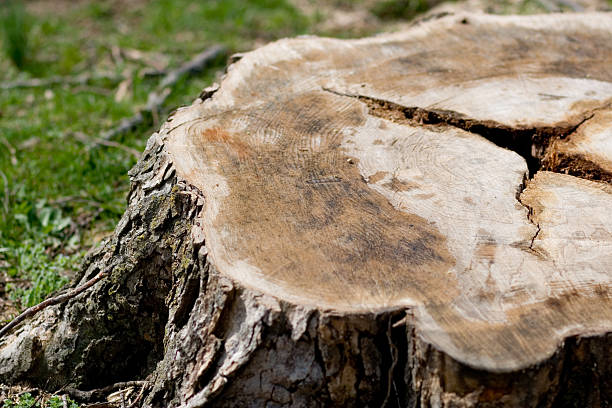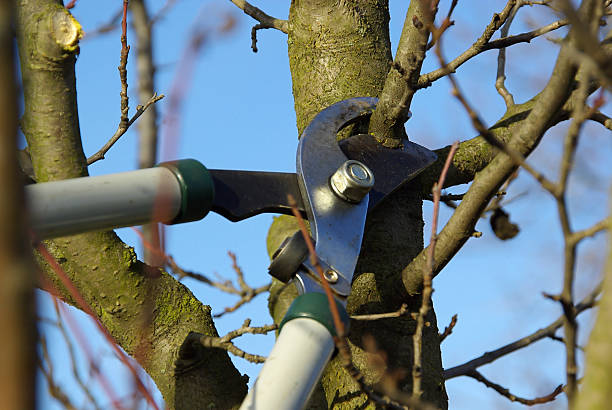There are a few simple ways to remove a stump without the need for an expensive stump grinder. Digging, burning and chemical methods are all possible with the right tools and determination.
Start by digging around the stump with a mattock or shovel, exposing any roots that are still buried beneath the surface. Then, drill several holes in the stump using the largest, widest bit you have available.

Digging
Digging out a stump is a labor-intensive process that may take hours to complete, but it can save you from having to rent heavy equipment or hire a professional. This method can also expose smaller, hidden roots that can be cut with clippers or a chainsaw.
Before digging, it is important to dig a hole that is larger than the stump’s root ball to prevent it from growing back. Once the stump is exposed, use a spade, mattock, or digging iron to dig around and under the roots. Larger roots can be cut with a chainsaw or hatchet.
There are several chemicals that will kill a tree stump and its roots. However, they are hazardous to pets and the surrounding flora. The most common is potassium nitrate, which can be purchased as a granular stump-removal product. When poured over the stump, this chemical will encourage fungus to grow within the dead stump and eventually break it down. However, this method is not a good choice if you are in a hurry as it can take months. If you’re looking for safer and more efficient options, consider professional stump removal in Mornington Peninsula.
Prying
The best way to remove a tree stump without damaging the surrounding area is to pry it out with a shovel or mattock. This method is time-consuming, backbreaking and potentially damaging to the roots of nearby plants, but it is the most effective in terms of removing a stump.
Another way to get rid of a stump is by using potassium nitrate. To do this, first drill holes into the top of the stump. Once the holes are drilled, fill them with potassium nitrate granules and water. Then, cover the stump with a dark tarp, which will prevent it from getting sunlight. Over a period of months, the tarp will slowly kill the stump and roots.
You can also try burning the stump. To do this, you will need to dig up the stump as close to ground level as possible. Then, drill holes into the stump and pour kerosene or fuel oil (not gasoline) into them. Once the liquid has soaked in, light it and let it burn until it is completely destroyed.
Tarping
Many people prefer to use a stump grinder, but for those who want a natural, additive-free approach this is an alternative. It takes a bit more time, but it allows you to dig around the stump and expose smaller, hidden roots. It also makes it possible to remove the stump and the lower portion of the tap root without damaging surrounding areas.
First, a few holes are drilled into the stump and filled with kerosene. It will take a few weeks for the liquid to seep into the stump and burn it from the inside out. Once the stump and roots are burned, wood chips can be raked over the hole to cover and treat the area. Be sure to check with your local fire department first before burning a stump.
Another natural, non-additive way to remove a tree stump is to starve it of sunlight. Stumps and the suckers that grow from them require light to photosynthesize. Simply cover the stump with a tarp, preferably one that is made of organic material, such as hay or bark. This process can take up to a year, but it is considered one of the safest and most natural ways to remove an unwanted stump.
Chemicals
If you want to remove a stump without the labor of digging it out or using a grinder, there are several chemical methods to try. These methods speed up the natural decay process so that a stump and its roots can break down. Additionally, if you’re looking for professional assistance, you can explore stump removal Dromana that specialize in safe and efficient stump removal techniques.
The first thing you’ll need to do is choose a chemical method that suits your property. There are many options, including potassium nitrate, which works in the same way as fertilizer but is specifically designed to speed up the decomposition of tree stumps. Another option is to use a commercial stump removal product, such as Tordon RTU, which contains picloram, an herbicide safe for domestic use that kills the roots and prevents regrowth.
If you prefer a more direct approach, you can burn the stump with kerosene or diesel fuel. This is a relatively easy, but dangerous, method of stump removal that requires good safety equipment and knowledge of how to safely handle flammable fuels. It’s also best used in an area that is not prone to wildfires. If you do choose to burn a stump, it’s important to protect the surrounding areas with a tarp and to have a fire extinguisher nearby.
Stump Grinder
The easiest way to remove a tree stump without damaging surrounding areas is by using a stump grinder. The machine grinds the stump and cuts any roots that are connected, leaving behind a pile of wood chips. This method is more expensive than digging or burning, but it is the quickest and leaves less mess. If removing the tree stump is difficult for you, you can seek professional assistance from Uppercut Tree Services.
If you don’t have a stump grinder, you can dig out the stump and roots manually. Depending on the size of the stump, this can be difficult and time-consuming. A rented stump grinder can cut down a stump and root system in about two to six hours. Stump grinding also removes insects like termites, carpenter ants and wood bees that would otherwise make their home in a rotting stump.
Another option is to use a chemical stump remover. The product works by speeding up the wood’s natural decay. Most products require drilling holes into the stump, applying the chemical and waiting for the stump to die. This option is safer than using a fire to burn the stump, but it may still take hours to complete.
